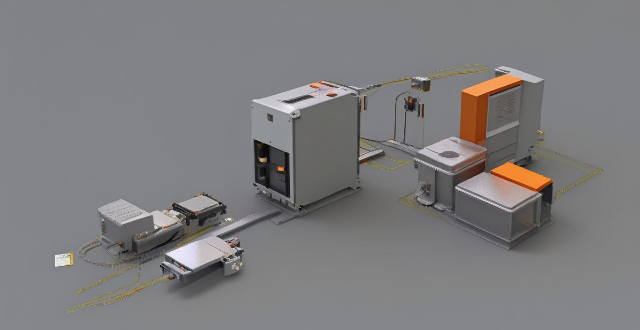Power Environmental

What are the environmental impacts of electric cars ?
Electric cars, also known as EVs (Electric Vehicles), have become increasingly popular in recent years due to their potential to reduce greenhouse gas emissions and improve air quality. However, like any other technology, electric cars also have some environmental impacts that need to be considered. In this article, we will discuss the various environmental impacts of electric cars. One of the most significant environmental benefits of electric cars is their ability to reduce greenhouse gas emissions. Compared to traditional gasoline-powered vehicles, electric cars produce zero tailpipe emissions. This means that they do not release harmful pollutants such as carbon dioxide, nitrogen oxides, and particulate matter into the atmosphere. As a result, electric cars can help reduce air pollution and improve public health. The environmental impact of electric cars also depends on the source of energy used for charging them. If the electricity used to charge an electric car comes from renewable sources such as wind or solar power, then the overall environmental impact is positive. However, if the electricity comes from coal-fired power plants or other non-renewable sources, then the environmental benefits are reduced. It is essential to ensure that the electricity used for charging electric cars comes from clean and sustainable sources. The production of lithium-ion batteries used in electric cars has some environmental impacts. The mining and processing of raw materials required for battery production can lead to water pollution, soil contamination, and habitat destruction. Additionally, the disposal of spent batteries can pose challenges as they contain toxic chemicals that can harm the environment if not disposed of properly. Recycling programs and research into alternative battery technologies can help mitigate these impacts. The manufacturing process of electric cars also has some environmental impacts. The production of electric car components requires energy and resources, which can lead to greenhouse gas emissions and other forms of pollution. However, compared to traditional gasoline-powered vehicles, electric cars generally have a lower environmental impact during the manufacturing process due to their simpler design and fewer moving parts. To fully understand the environmental impacts of electric cars, it is essential to consider their entire lifecycle, including raw material extraction, manufacturing, use, and disposal. A comprehensive lifecycle analysis can help identify areas where improvements can be made to reduce the overall environmental impact of electric cars. This may include using more sustainable materials, improving energy efficiency during manufacturing, and developing better recycling programs for spent batteries. In conclusion, while electric cars offer significant environmental benefits over traditional gasoline-powered vehicles, they also have some environmental impacts that need to be considered. By addressing these issues through sustainable practices and continued research, we can maximize the positive environmental impacts of electric cars and work towards a cleaner, greener future.

Is green technology a sustainable solution for environmental problems ?
Green technology offers a promising pathway towards sustainability, but it's not without its challenges. While it has the potential to significantly mitigate environmental problems, it requires substantial investment, infrastructure development, and policy support to reach its full potential.

What are the benefits of using solar power ?
Solar power is a renewable and sustainable energy source that offers numerous benefits. It can be cost-effective in the long run, environmentally friendly, promotes energy independence, has low maintenance costs, versatile applications, creates jobs, provides government incentives, increases property value, and enhances energy security. As technology advances and awareness grows about renewable energy sources like solar power, its adoption is expected to continue rising worldwide.

What are the challenges in developing and implementing tidal power as an alternative energy source ?
Tidal power is a promising alternative energy source that harnesses the energy of ocean tides to generate electricity. However, its development and implementation face several challenges, including technical, environmental, economic, and social aspects. Technical challenges involve efficiency and reliability issues with turbine design, maintenance, and power transmission. Environmental challenges include potential impacts on marine life and water quality. Economic challenges involve high upfront costs and market competitiveness. Social challenges encompass community acceptance, legal and regulatory hurdles, and local economy impacts. Addressing these multifaceted challenges is crucial for the successful development and implementation of tidal power on a larger scale.

How does solar power work and is it a viable option for homes ?
Solar power is generated through solar panels made of silicon cells that convert sunlight into direct current (DC) electricity. This process involves absorption of light, conversion to DC, conversion to alternating current (AC), and distribution throughout a home or business. Solar power is a viable option for homes due to its renewable nature, cost savings, environmental benefits, and government incentives. However, weather conditions, storage options, and upfront costs should also be considered before deciding if solar power is the right choice for your home.

How has the development of power electronics influenced the design of modern drive motors ?
The advancement of power electronics has significantly influenced the design and performance of contemporary drive motors. This technological progress has led to more efficient, reliable, and sophisticated motor control systems, offering a wide array of benefits across various sectors. Here are some key points: - **Enhanced Efficiency and Performance**: Power electronics have enabled advanced control techniques like FOC and DTC, optimizing motor operation for better dynamic response and efficiency. The introduction of VFDs allows motors to operate at varying speeds without mechanical gearboxes or belt drives, enhancing energy efficiency and reducing mechanical wear. - **Improved Reliability and Durability**: Integrated power electronics can monitor motor conditions in real-time, enabling predictive maintenance that reduces downtime and repair costs. Modern drive motors often include protection features like overcurrent, overvoltage, and temperature monitoring, thanks to the integration of power electronics. These safeguards extend the motor's lifespan and ensure stable operation. - **Customizable and Smarter Motors**: Power electronics enable motors with programmable settings that can be tailored to specific applications, improving performance and adaptability. The inclusion of power electronics paves the way for IoT integration, where motors can communicate with other devices, enabling smart grid functionalities and remote diagnostics. - **Environmental Benefits**: By allowing motors to operate at optimal speeds and loads, power electronics contribute to significant energy savings, aligning with global efforts to reduce energy consumption and greenhouse gas emissions. Modern drive motors utilizing power electronics often operate more smoothly, resulting in reduced noise pollution compared to traditional motor designs. - **Scalability and Cost-Effectiveness**: Power electronic components can be designed modularly, making it easier to scale motor designs up or down to meet specific power requirements without starting from scratch. As power electronic components become more standardized and mass-produced, their cost decreases, making advanced motor designs more accessible to a broader range of industries and applications.

How long does a typical power battery last in an electric vehicle ?
Electric vehicles (EVs) have become increasingly popular due to their environmental benefits and lower operating costs. One of the most common concerns for potential EV owners is the lifespan of the vehicle's power battery. In this article, we will explore the typical lifespan of a power battery in an electric vehicle and factors that can affect it. The lifespan of a power battery in an electric vehicle depends on several factors, including the type of battery, driving habits, and maintenance practices. However, a general rule of thumb is that a typical power battery lasts between 8-15 years or 100,000-200,000 miles. Several factors can impact the lifespan of a power battery in an electric vehicle. These include: - Type of Battery: The two most common types of batteries used in EVs are lithium-ion and nickel-metal hydride. Lithium-ion batteries generally have a longer lifespan than nickel-metal hydride batteries. - Driving Habits: Frequent rapid acceleration and braking can shorten the lifespan of a power battery. Additionally, driving at high speeds and in hot temperatures can also negatively impact battery life. - Maintenance Practices: Proper maintenance practices, such as regularly checking and maintaining the cooling system, can help extend the lifespan of a power battery. Neglecting maintenance can lead to premature battery failure. - Charging Habits: Charging the battery to 100% every time can shorten its lifespan. It is recommended to charge the battery to around 80% to prolong its lifespan. As a power battery ages, it may start showing signs of failure. Some common signs include: - Reduced Range: If you notice a significant decrease in the distance your EV can travel on a single charge, it could be a sign that your power battery is failing. - Slow Charging: If your EV takes longer to charge than usual, it could be a sign that your power battery is losing capacity. - Decreased Performance: If you notice a decline in your EV's overall performance, such as slower acceleration or reduced top speed, it could be due to a failing power battery. - Bulging or Swelling: If you notice any physical changes to your power battery, such as bulging or swelling, it is a clear sign that it needs to be replaced. In conclusion, the typical lifespan of a power battery in an electric vehicle is between 8-15 years or 100,000-200,000 miles. However, several factors can impact the lifespan of a power battery, including the type of battery, driving habits, maintenance practices, and charging habits. By being mindful of these factors and properly maintaining your EV's power battery, you can help extend its lifespan and enjoy many years of reliable performance.

What role can nuclear power play in providing alternative energy solutions ?
Nuclear power is a low-carbon energy source that can contribute significantly to providing alternative energy solutions. It offers several advantages, such as low carbon emissions, high energy density, diverse fuel sources, waste management capabilities, economic benefits, job creation, and energy security. With its potential to reduce carbon emissions and mitigate climate change, nuclear power can play a crucial role in meeting our energy needs while also contributing to environmental sustainability.

How do environmental subsidy policies influence consumer behavior ?
Environmental subsidy policies aim to promote sustainable practices and reduce environmental harm by offering financial incentives. These policies can encourage green consumption, lower the cost of eco-friendly products, and raise awareness about environmental issues. However, they also face challenges such as insufficient incentives, unintended consequences, and limited scope and impact. Therefore, careful design and evaluation are crucial for ensuring their effectiveness in promoting sustainable development.

How can we balance economic growth with environmental sustainability ?
Balancing economic growth with environmental sustainability requires a multifaceted approach that includes promoting green infrastructure and renewable energy, encouraging sustainable business practices, fostering innovation and technology development, educating and engaging stakeholders, and implementing policies and regulations. By taking these steps, we can create a more sustainable future where economic prosperity coexists with environmental well-being. Achieving this balance will require ongoing effort from all sectors of society, including governments, businesses, communities, and individuals alike.

How does solar power generation work and is it a viable option for residential use ?
Solar power generation involves converting sunlight into electricity using solar panels, which are made up of photovoltaic cells. The process includes generating electricity, converting it from DC to AC, net metering, and battery storage. Solar power is a viable option for residential use due to its cost-effectiveness, energy independence, environmental benefits, increased property value, and technological advancements.

What is the role of individuals in addressing climate change and environmental degradation ?
This article discusses the role of individuals in combating climate change and environmental degradation. It highlights the cumulative impact of individual actions, their potential to inspire others, and the political pressure they can exert. The article provides practical steps individuals can take, such as reducing their carbon footprint, supporting renewable energy, waste reduction and recycling, advocating for environmental policies, and spreading awareness. It emphasizes that collective efforts can make a significant difference in creating a more sustainable future for our planet.

What is the current state of fusion power research and its potential as an ultimate renewable energy source ?
Fusion power research aims to harness energy from fusing atomic nuclei, similar to the sun's process. Key developments include the ITER project, breakthroughs in magnetic confinement fusion, and advances in inertial confinement fusion. Challenges include technical hurdles, economic viability, and safety concerns. Fusion power has potential as an ultimate renewable energy source due to its unlimited and clean energy production, minimal environmental impact, and long-term sustainability.

Can power batteries be recycled or reused after they are no longer suitable for use in electric vehicles ?
Recycling and reusing power batteries from electric vehicles is crucial for environmental protection, resource conservation, and economic benefits. The recycling process involves collection, sorting, dismantling, reprocessing, and refining of used batteries to extract valuable materials. However, challenges such as technical difficulties and economic viability must be addressed. Reusing power batteries extends their lifespan, reduces costs, and opens up innovative applications like energy storage systems or mobile charging stations. Assessment, modification, integration, and monitoring are key steps in reusing power batteries. Despite challenges like compatibility issues and safety concerns, there are opportunities for innovation in both recycling and reusing processes.

What are the environmental impacts of driving an electric car ?
Driving an electric car can have a range of environmental impacts, both positive and negative. Some key factors to consider include reduced emissions, battery production and disposal, and energy sources. Electric cars produce zero tailpipe emissions, which can help improve air quality and reduce respiratory problems caused by vehicle emissions. Depending on how the electricity used to charge the car is generated, electric cars can also have a lower carbon footprint than traditional vehicles. However, the production of lithium-ion batteries for electric cars requires large amounts of energy and raw materials, which can have significant environmental impacts. At the end of their lifespan, batteries must be disposed of properly to prevent harmful chemicals from leaking into the environment. The environmental benefits of driving an electric car depend largely on where the electricity comes from. If it's generated by burning coal or other fossil fuels, the reduction in emissions may not be as significant as if it comes from renewable sources. As more people switch to electric cars, there will be increased demand for electricity, which could put a strain on power grids and lead to increased energy production. By addressing these challenges and continuing to develop cleaner energy solutions, we can maximize the environmental benefits of electric cars.

How does a lithium-ion power battery work ?
Lithium-ion power batteries work through the movement of lithium ions between the anode and cathode during charging and discharging, generating an electrical current to power devices. The process involves intercalation and deintercalation of ions in the electrodes, facilitated by an electrolyte and separator. Safety mechanisms and lifespan are key considerations for these widely used batteries.

Are there any safety concerns associated with power batteries in electric vehicles ?
Electric vehicles (EVs) are becoming increasingly popular as an alternative to traditional gasoline-powered cars. One of the main components of an EV is its power battery, which stores energy and provides it to the electric motor. While power batteries have many benefits, there are also some safety concerns associated with them. In this article, we will discuss these concerns and how they can be addressed. The most significant safety concern associated with power batteries is thermal runaway. This occurs when a battery cell overheats and causes a chain reaction that can lead to fire or explosion. Thermal runaway can be caused by various factors, including manufacturing defects, physical damage, or improper charging. Another safety concern associated with power batteries is chemical leaks. Lithium-ion batteries, which are commonly used in EVs, contain chemicals that can be harmful if they leak out of the battery pack. Finally, there is a risk of fire associated with power batteries in EVs. While fires are rare, they can occur due to thermal runaway or other factors, such as physical damage to the battery pack.

Can you explain the importance of continuous environmental monitoring ?
The article emphasizes the importance of continuous environmental monitoring, which involves regularly collecting data on various environmental factors such as air and water quality, soil conditions, and biodiversity. It helps identify potential issues early on, track long-term changes, support conservation efforts, enhance public awareness, and facilitate research and innovation. The author encourages everyone to stay informed about the state of their local environment and take action to protect it.

What are the potential benefits and drawbacks of nuclear power in terms of climate change and energy security ?
Potential Benefits of Nuclear Power: - Low carbon emissions during operation, contributing to climate change mitigation. - High energy density of uranium enhances energy security by reducing reliance on imported fuels. - Ability to provide stable baseload power ensures reliability and energy security. Potential Drawbacks of Nuclear Power: - Significant GHG emissions from mining, refining uranium, plant construction, and decommissioning. - Long-lived radioactive waste poses challenges for climate change mitigation and environmental safety. - Risk of meltdowns and nuclear proliferation undermines energy security.

How does climate change legislation address the concerns of environmental justice and equity ?
Climate change legislation should address environmental justice and equity by prioritizing vulnerable communities, promoting participatory decision-making, ensuring access to clean energy and sustainable practices, and addressing environmental health disparities. This will create more equitable and effective climate policies for all communities.

What role do citizens play in shaping environmental legislation ?
The text discusses the significant role that citizens play in shaping environmental legislation. It outlines various ways in which they can influence such legislation, including advocacy and public awareness, voting and elections, lobbying and policy influence, litigation and legal action, and grassroots movements and direct action. The text emphasizes that by working together, citizens can help create a more sustainable future for themselves and future generations.

How has social media influenced environmental awareness campaigns ?
The text discusses how social media has revolutionized communication and information sharing, particularly in the context of environmental awareness campaigns. It outlines various ways in which social media has impacted these campaigns, including increased visibility, interactivity, accessibility, influence of celebrities and influencers, real-time updates, and crowdsourcing and fundraising opportunities. The text concludes that social media is an essential tool for promoting environmental causes and will likely continue to play a significant role in shaping our understanding of the environment and inspiring action.

How much power can a hub motor generate ?
Hub motors are electric motors built into the wheel's hub and are commonly found in electric vehicles, wheelchairs, and other space-limited applications. The power generation of a hub motor is influenced by its design, size, and the type of battery it uses. Larger motors generally produce more power but require more energy to operate. The control system managing the motor's power output can also affect performance. Examples of hub motor power generation include small electric bikes (250-500 watts), medium electric bikes (500-1000 watts), large electric bikes (over 1000 watts), electric wheelchairs (250-1000 watts), and other applications like golf carts and electric cars with varying power ratings.

How does the issuance of green bonds benefit environmental projects ?
Green bonds are financial instruments designed to fund environmentally friendly projects, offering benefits such as increased funding opportunities, improved project visibility, long-term financing, risk mitigation, market growth and innovation, policy and regulatory support, and community and environmental impact. These bonds not only benefit the specific environmental projects they aim to fund but also contribute to a broader shift towards sustainable finance and environmental stewardship.

How does the availability of electric vehicle infrastructure impact the environmental benefits of EVs ?
Electric vehicle infrastructure plays a pivotal role in maximizing environmental benefits. Adequate charging networks reduce range anxiety, increase EV usage, and support optimal charging times for minimal carbon footprints. Renewable energy integration through solar and wind power further enhances green initiatives. Smart urban planning and design facilitate seamless EV adoption, while consumer behavior shifts with improved infrastructure, promoting eco-friendly habits. The development of robust and innovative EV infrastructure is crucial to fully realize the environmental potential of electric vehicles.

How does climate justice relate to environmental racism ?
This text discusses the interconnected reality of climate justice and environmental racism. It defines both terms, outlines their intersection in terms of historical and structural inequities, disproportionate impacts, mitigation and adaptation inequities, and exclusion from decision-making processes. It then proposes solutions to address this intersection, including promoting participatory democracy, equitable allocation of resources, enforcing environmental justice legislation, and building resilience through education and capacity building. Overall, it emphasizes the need for a more equitable approach to environmental protection and climate action that recognizes and challenges the root causes and impacts of environmental racism within the broader context of climate justice.

What are the advantages and disadvantages of using lithium iron phosphate batteries as power batteries ?
Lithium iron phosphate batteries are a popular choice for power batteries due to their longer lifespan, higher safety, environmental friendliness, and lower cost compared to other types of lithium-ion batteries. However, they also have some disadvantages such as lower energy density, slower charging speed, temperature sensitivity, and limited availability. Despite these drawbacks, lithium iron phosphate batteries remain a reliable and efficient option for many applications.

How do women navigate power dynamics in relationships ?
In relationships, power dynamics often play a significant role, and understanding how to navigate them is crucial for maintaining healthy partnerships. Here's a detailed exploration of strategies women can use to manage power dynamics effectively: #### **Understanding Power Dynamics** Power dynamics refer to the distribution of influence, control, and authority within a relationship. It's important to recognize that power imbalances can manifest in various forms, such as financial disparity, differences in social status, educational background, or even emotional control. ##### **Key Points to Consider:** - **Awareness:** Recognize when power imbalances are present. - **Equality:** Work towards an equal distribution of power. - **Communication:** Open dialogue about each other's needs and expectations. #### **Strategies for Navigating Power Dynamics** 1. **Open Communication** - Start by discussing your feelings and expectations openly. - Use "I" statements to express yourself without accusing or blaming. - Encourage your partner to do the same. 2. **Setting Boundaries** - Identify what you find acceptable and unacceptable in a relationship. - Clearly communicate these boundaries to your partner. - Respect each other's boundaries equally. 3. **Shared Decision-Making** - Make decisions together rather than one person making all the choices. - Discuss options and consider each other's opinions and preferences. - Resolve conflicts collaboratively. 4. **Financial Independence** - Aim for financial independence where possible. - Discuss money matters transparently and work towards joint financial goals. - Avoid financial dependence on a partner to maintain negotiating power. 5. **Personal Growth and Self-Improvement** - Invest in your own education and career development. - Pursue hobbies and interests outside of the relationship. - Maintain a strong support network of friends and family. 6. **Recognizing and Addressing Manipulation** - Be aware of manipulation tactics such as guilt-tripping, silent treatments, or gaslighting. - Address these behaviors immediately and firmly. - Seek help from a counselor if needed. 7. **Mutual Respect** - Treat each other with respect at all times. - Avoid belittling or undermining your partner, even in arguments. - Acknowledge each other's achievements and contributions. 8. **Seeking Support** - Don't hesitate to seek advice from trusted friends, family, or professionals. - Attend workshops or read literature on healthy relationships. - Consider couples counseling if issues persist. #### **Conclusion** Navigating power dynamics in relationships requires a conscious effort to maintain equality, respect, and open communication. By employing strategies like setting clear boundaries, fostering shared decision-making, and encouraging personal growth, women can ensure their voices are heard and their needs are met within their relationships. It's essential to address any signs of unhealthy power dynamics promptly and to seek support when necessary to preserve a balanced and fulfilling partnership.